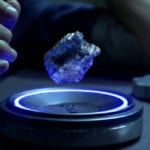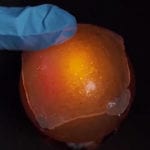 Weird Stuff
Weird Stuff  Weird Stuff
Weird Stuff  Animals
Animals 10 Inspiring Tales of Horses Being Human
 Mysteries
Mysteries Top 10 Haunting Facts About the Ghost Ship MV Alta
 History
History 10 Surprising Stories About the Texas Rangers
 Humans
Humans 10 Philosophers Who Were Driven Mad by Their Own Theories
 Miscellaneous
Miscellaneous 10 Video-Game-Worthy Weapons and Armors from History
 Weird Stuff
Weird Stuff 10 Psychics Who Accurately Predicted Wartime Events
 The Arts
The Arts 10 Pieces of Art Inspired by a Broken Heart
 Health
Health 10 Science Fiction-Sounding New Medical Treatments
 History
History 10 Surprising Facts About the Father of Submarine Warfare
 Weird Stuff
Weird Stuff 10 Times Real Laws Were Based on Bizarre Hypotheticals
 Animals
Animals 10 Inspiring Tales of Horses Being Human
 Mysteries
Mysteries Top 10 Haunting Facts About the Ghost Ship MV Alta
Who's Behind Listverse?

Jamie Frater
Head Editor
Jamie founded Listverse due to an insatiable desire to share fascinating, obscure, and bizarre facts. He has been a guest speaker on numerous national radio and television stations and is a five time published author.
More About Us History
History 10 Surprising Stories About the Texas Rangers
 Humans
Humans 10 Philosophers Who Were Driven Mad by Their Own Theories
 Miscellaneous
Miscellaneous 10 Video-Game-Worthy Weapons and Armors from History
 Weird Stuff
Weird Stuff 10 Psychics Who Accurately Predicted Wartime Events
 The Arts
The Arts 10 Pieces of Art Inspired by a Broken Heart
 Health
Health 10 Science Fiction-Sounding New Medical Treatments
 History
History 10 Surprising Facts About the Father of Submarine Warfare
10 Incredible Cutting-Edge Technologies In Development
Don’t give up on flying cars or hoverboards just yet! As technology marches relentlessly on, everything goes into development sooner or later—as demonstrated by the existence of these things, which we’ll almost certainly see within our lifetimes.
10 Artificial Gills

Inventors have long sought an underwater breathing apparatus that doesn’t store oxygen, but extracts it from the water the way gills do. Israeli inventor Alon Bodner has come close.
The device, aptly named LikeAFish, works by using a centrifuge to lower the pressure of water within an airtight chamber. Since only a little oxygen is contained in water, the device must move about 190 liters (50 gallons) per minute in order for the average person to breathe comfortably. Despite this, the only real barrier to implementation is size and weight, but it’s close enough that the device has been under consideration for military use for several years now.
Such a system would obviously allow for longer “bottom time” without the need for refilling oxygen and would decrease the amount of nitrogen the diver is exposed to. According to Bodner’s website, the company spent 2012 “quietly designing a prototype to be installed on board a naval submarine,” so they may be very close to solving the size and weight issues of previous prototypes.
9 Agricultural Robots

Agricultural robotics are, somewhat surprisingly, still in their infancy. While unemployment seems to be leveling off, there is still talk of a possible general labor shortage in the near future—particularly in agriculture. Many companies worldwide are attempting to bring various types of robot farmhands to market, but in robotics (where government and academic projects still lead the way) it tends to take longer than in some other, more commercial industries for such projects to obtain funding, produce a product, and prove its viability.
But the technology is coming along, and it’s easy to imagine it implemented on a wide-scale basis before too long. One Boston company that was able to raise nearly $8 billion in private funds in 2011 has developed a robot that it claims could perform 40 percent of the manual labor currently performed on farms. A Japanese research company has developed a robot that performs stereo imaging of strawberries to determine their ripeness before picking them, and MIT has a cherry tomato garden that is managed by a small crew of robots equipped with vision sensors. Of course, the main advantage to robot farm workers is the fact that they can work around the clock and never get tired.
8 Sunscreen Pills

An effective sunscreen that can be administered orally has been sought after for some time now. One doctor claims that a fern extract, containing the compound polypodium leucotomos, can act as such. He cites a human study showing less sun damage to the skin of those who were administered the active ingredient (though he did have to admit that there were only 12 people involved).
Also promising is a study at King’s College in London, which has determined a method by which coral protects itself from UV rays through its relationship with a symbiotic algae that lives within it. The algae produces a chemical compound which is converted by the coral into its own UV-blocking sunscreen, benefiting not only the coral and the algae but also the fish that feed on the coral. This transference has led scientists to believe that if the compound can be isolated, it could potentially be modified into a human oral sunscreen that would protect both the skin and the eyes. Said Dr. Paul Long, head of the three-year project, “There would have to be a lot of toxicology tests done first but I imagine a sunscreen tablet might be developed in five years or so. Nothing like it exists at the moment.”
7 Paper-Thin, Flexible Computers and Phones
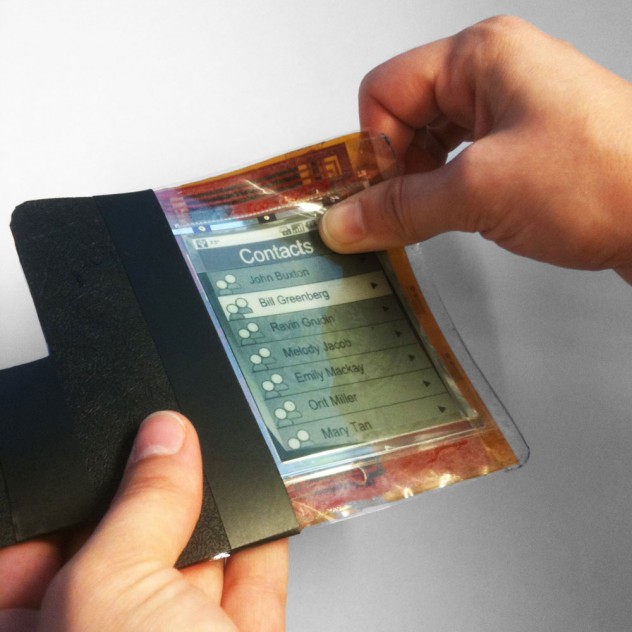
In early 2013, consumer electronics shows debuted a prototype by European firm Plastic Logic of a product called the Papertab. That would be a portmanteau of “paper” and “tablet” and it is pretty much what it sounds like: a fully functional, touch screen tablet computer that is not only as thin as a sheet of paper, but as flexible as one too, and possesses the same reflective qualities. The company envisions such machines being ubiquitous within five to 10 years, as they could be inexpensive and interactive. A consumer could have several lying around, multi-tasking with different media all in service of one project.
A joint project between two American and Canadian universities has been creatively dubbed the Paperphone. Queens University director Dr. Roel Vertegaal has largely the same vision of the project. “This is the future,” he says. “Everything is going to look and feel like this within five years.” The machine is the size of a regular smartphone, with a 9.4-centimeter (3.7 in) display, but again, paper-thin and flexible. Users can give the phone commands by using “bend gestures.” It consumes no power when not in use and is considerably harder to damage than an ordinary phone.
6 Tooth Regeneration

Regeneration of body parts in humans seems permanently consigned to the realm of science fiction, even though many species of animals are able to completely regrow lost parts. It’s long been known that alligators are able to regrow lost teeth, for example, but it was assumed to be a cyclical process, like snakes shedding their skin periodically. Scientists have recently discovered that this is not the case: An alligator’s tooth will grow back automatically to replace a lost one. This is quite significant because the structure of alligators’ teeth is pretty similar to ours.
The problem has been that the inner areas of teeth contain living tissue known as “pulp” that doesn’t grow back. But the solution may have been found in stem cells: Scientists in multiple countries are trying to figure out how to get them to produce the correct tissues and structure for the given situation on demand. A University of Utah study in November 2012 confirmed that this could be done in a lab. Perfection of this technology could result in the potential end of tooth decay, gum disease, fillings, and root canals.
5 Holographic TV
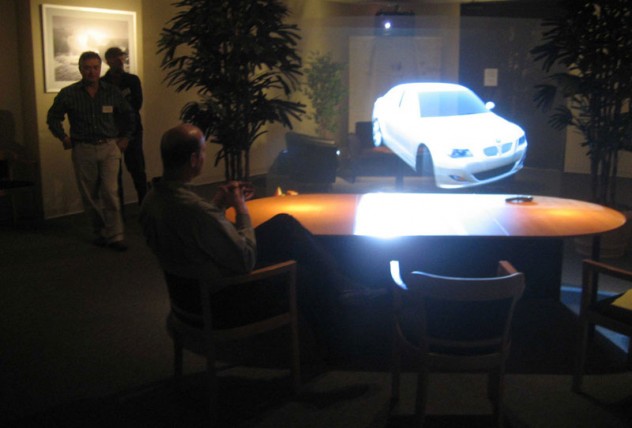
While Ultra High Definition TV is on the way, there are really only so many pixels you can cram into a flat display—most existing models are 214-centimeter (84 in) monsters for that very reason. But the next generation of TVs, if you can call them that, won’t have screens so much as they’ll have a viewing area. As seen above, it could be a desktop display, or it could be an entire room—but holographic displays are definitely in the works.
Researchers at MIT, who are apparently good at the cutting-edge technology thing (hence the “T”), have created a chip that can support a holographic display of 50 gigapixels per second—enough to simulate real world objects, as reported in the journal Nature. Such amazing technology will have to wait to come to marketplace, though, until costs can be driven down—right? Well, says Michael Bove, head of MIT’s Object-Based Media group: “The technology itself is one that’s easy and inexpensive and, as far as we are aware and Nature is aware, has never been applied to displays before.” He foresees holographic displays on the market within 10 years—at the same cost as today’s regular, flat TVs. Another company, Provision, has built an inexpensive projector that displays a 45-centimeter (18 in) image. As of this writing, they’re working on ramping that up to a two-meter (six-foot) image, displayed by a unit the size of a toaster.
4 Real-Time Google Earth

At RAL Space in Oxford, scientists are building two video cameras quite unlike any other. Meter-long tubes packed with electronics and mirrors, these cameras are to be mounted to the outside of the International Space Station. But their purpose isn’t to capture images of space—they’ll be pointed toward the Earth. And while the resolution won’t be great (roughly a meter per pixel) it will be a real-time, streaming, live video of the entire planet.
Meanwhile, some Georgia Tech researchers are taking a slightly different approach toward the same ends. They take footage from the many live video feeds around the world and use it to layer complex animations on top of Google Earth, sometimes piecing together multiple camera angles to extrapolate the desired information. While currently focusing on people and cars, they’d like to add animals and weather conditions soon.
3 Wireless Electricity
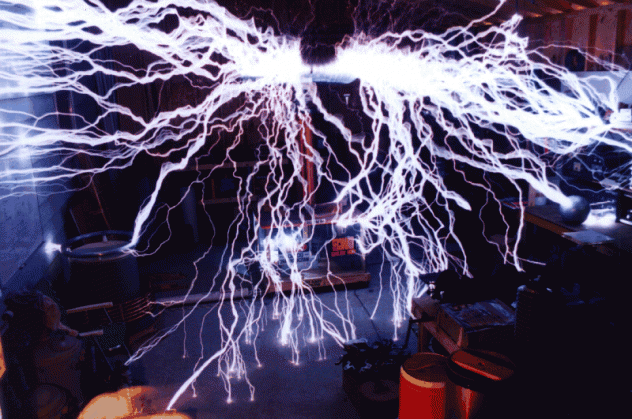
The notion of wireless electric power has been around far longer than one might think: Nikola Tesla might have perfected the technology a century ago if he had not been poor, unlucky, and kind of crazy. Many today are unaware that, even though it has obviously yet to be deployed en masse, wireless power transfer actually exists.
Wireless device charging has been around for some time, and continues to improve. Companies like Witricity are at work developing electric “hubs” that can power your entire house. Their prototype is called “Prodigy” and is based on research done by physicist Marin Soljacic of MIT. It works by exploiting the fact that certain frequencies of electromagnetic waves facilitate ease of energy transfer, and two objects resonating with such a frequency can easily transfer electricity between them, even at some distance and even if the objects are metal. When perfected (which many see coming within the next decade), it could bring about an end to batteries as we know them.
2 Ultra–High Speed Tube Trains

Magnetic levitation, or Maglev, trains have been in development for quite some time. In Japan, a recent successful test run means that plans are underway to connect the whole country by 2045 with trains capable of reaching over 480 kph (300 mph). They accomplish this by removing the wheels—and thereby, contact and friction—from the equation. Maglev trains levitate above the track, suspended by an electromagnetic field. And while the Japanese model is impressive, one company in the small Colorado town of Longmont is upping the ante by eliminating another barrier to shattering speeds: namely, wind resistance.
To be fair, eliminating this factor doesn’t so much up the ante as it blows up the entire house containing the card table. Daryl Oster of ET3 says that his company’s concept, called the Evacuated Tube Transport, is the future of transportation, and it very well may be. Its track is contained within a sealed, pressurized vacuum tube, making the capsules conceivably capable of speeds up 6,500 kph (4,000 mph), all while subjecting the passenger to G-forces comparable to that of a leisurely ride on the highway and transporting them across the entire US in less than an hour. ET3 has built prototype capsules and, as of this writing, are searching for an appropriate stretch to build the first tube.
1 Sustainable Fusion Reactor
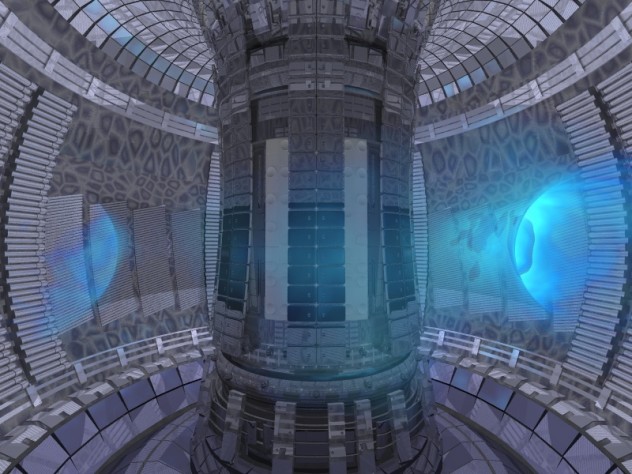
Nuclear fission (the process by which nuclear power plants produce energy) is much easier to control than nuclear fusion (the process by which the sun burns, and nuclear weapons work). Small nuclear fusion reactors have been built, but a large-scale, sustainable fusion reactor has yet to be attempted—until now. A consortium of seven member bodies (the US, EU, Russia, China, Japan, South Korea, and India) has chosen a location in France to build the world’s first. And while even its champions concede it could be decades before it’s dispensing energy, nuclear fusion is cleaner and yields three to four times more power than fission.
The project is called ITER, for International Thermonuclear Experimental Reactor, and it is the second-largest cooperative international scientific endeavor (ranking behind only the Space Station). It will use a donut-shaped magnetic field to contain gases that will reach temperatures comparable to those at the core of the sun, in excess of 150 million degrees C (270 million F), and will produce 10 times more power than it consumes.





